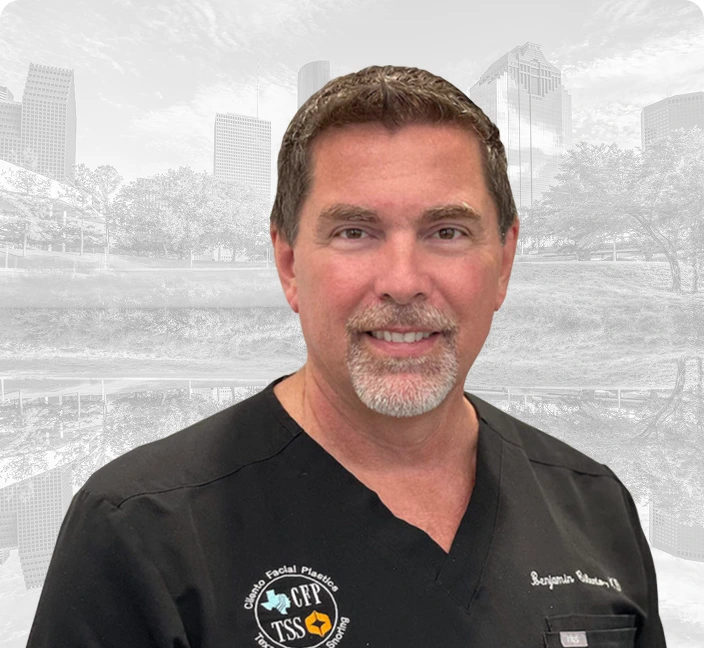Key Takeaways
- Understand the differences between open and closed rhinoplasty to make an informed decision.
- Prepare for your consultation by knowing which questions to ask about the surgeon’s experience and your desired outcome.
- Learn how to get ready for surgery with a pre-surgery checklist to ensure the best possible results.
- Discover what to expect during the rhinoplasty procedure to ease any pre-surgery nerves.
- Learn the essential steps for post-operative care to ensure a smooth recovery and maintain the shape of your new nose.
Your First Steps to a New Nose: Deciding on Rhinoplasty
Understanding Rhinoplasty and Its Benefits
Rhinoplasty, commonly referred to as a nose job, is more than just a cosmetic procedure. It’s a transformative journey that can enhance your facial aesthetics and, for some, improve breathing function and restore nasal appearance after an injury. This surgery can address a range of concerns, such as reshaping the nose’s bridge, adjusting the nostrils, refining the nasal tip, and correcting a deviated septum.
Is Rhinoplasty the Right Choice for You?
Deciding to undergo rhinoplasty is a personal choice and should be based on your individual needs and goals. Ask yourself why you want the surgery and what you hope to achieve from it. If you’re looking for a confidence boost or need to correct a functional issue, rhinoplasty might be a suitable option. However, it’s important to have realistic expectations and understand that the goal is improvement, not perfection.
The Rhinoplasty Playbook: Procedure Explained
Rhinoplasty can be broken down into two main types: open and closed. Both have their advantages, and the right choice will depend on the complexity of the surgery and the specific changes you’re looking to make.
Open vs. Closed Rhinoplasty: Choosing Your Path
Techniques Crafted for Your Unique Nose
Pre-Surgery Checklist
Consultation: Questions to Ask Your Plastic Surgeon
Before committing to rhinoplasty, you’ll want to have a detailed consultation with your surgeon. Here are some crucial questions to ask:
- How many rhinoplasty procedures have you performed?
- Can I see before-and-after photos of your previous work?
- What are the potential risks and complications?
- What can I expect regarding recovery and aftercare?
- How do you handle revisions if I’m not satisfied with the results?
Getting Physically Ready
Before surgery, there’s a checklist you’ll need to follow to ensure you’re physically prepared. This includes:
- Avoiding certain medications that can increase bleeding, like aspirin or ibuprofen, for two weeks before and after surgery.
- Stopping smoking well in advance, as smoking can delay healing and increase the risk of complications.
- Arranging for someone to drive you home after the procedure and stay with you for at least the first night.
What Happens During Nose Surgery
On the day of your rhinoplasty, you’ll be administered anesthesia to ensure your comfort during the procedure. Depending on your specific case and your surgeon’s preference, you may receive either general anesthesia or local anesthesia with sedation.
Once the anesthesia takes effect, your surgeon will make the incisions according to the chosen approach, either open or closed, and begin the delicate process of reshaping your nose. This could involve altering bone and cartilage, grafting tissue, or refining the nasal tip.
A Step-by-Step Glimpse into Rhinoplasty
The rhinoplasty procedure typically follows these steps:
- Anesthesia is administered.
- Incisions are made inside the nostrils or across the columella, depending on the technique.
- The nose’s structure is reshaped to the desired contour.
- Incisions are closed with sutures.
- A splint is placed to support the new shape of the nose during the initial healing.
Understanding this process can help demystify what happens during the surgery and ease any apprehension you might have.
Critical Moments: What Surgeons Pay Attention To
During surgery, precision is paramount. Surgeons pay close attention to:
- The symmetry of the nose in relation to the rest of the face.
- The delicate balance between removing enough tissue to make a difference and maintaining enough to support the nose’s structure.
- Ensuring the airways are not compromised, allowing for not only an aesthetically pleasing result but also functional breathing.
These critical moments are where the surgeon’s skill and experience come into play.
Post-Op Success: Aftercare That Ensures the Best Results
After the surgery, following your surgeon’s aftercare instructions is crucial for the best outcome. This includes instructions on caring for your surgical site, medications to take for healing and infection prevention, and when to return for follow-up appointments.
The First 48 Hours
The first 48 hours post-surgery are critical. You’ll need to rest with your head elevated to reduce swelling and bleeding. It’s normal to feel congested due to the swelling and splints inside your nose. Pain is usually manageable with prescribed medication, and you should avoid blowing your nose to protect the delicate surgical work.
Long-Term Care: Nurturing Your Results
Risk Radar: Understanding Potential Complications
As with any surgery, rhinoplasty comes with risks. Some potential complications include:
- Bleeding or infection.
- Difficulty breathing through the nose.
- Numbness around the nose.
- An unsatisfactory aesthetic result, potentially requiring revision surgery.
What to Watch Out For
Even with a skilled surgeon, it’s essential to be vigilant during your recovery. Some common concerns include swelling, bruising, and mild discomfort, all of which are normal parts of the healing process. However, if you notice excessive bleeding, severe pain not controlled by medication, or signs of infection like fever or foul discharge, it’s crucial to contact your surgeon immediately.
When to Seek Help: Red Flags Post-Surgery
Most importantly, there are certain red flags you should never ignore after rhinoplasty:
- Sudden increase in swelling or bruising, especially if it’s only on one side.
- Sharp pain or a feeling of pressure that doesn’t go away with prescribed painkillers.
- Difficulty breathing that is not improving or is getting worse.
- Any signs of allergic reaction, such as hives or difficulty breathing.
If you experience any of these symptoms, please contact your surgeon as soon as possible to ensure your safety and the success of your surgery.
FAQs
How long is the recovery process after broken nose surgery?
Can I choose how my new nose will look?
What are the limitations after rhinoplasty surgery?
After rhinoplasty, you’ll need to take special care to protect your nose. Limitations include avoiding strenuous exercise, heavy lifting, and contact sports for at least 6 weeks. You should also avoid wearing glasses that rest on the bridge of your nose for a similar period to prevent indentations.
Will rhinoplasty help with breathing issues?
Rhinoplasty can help alleviate breathing issues related to structural problems within the nose, such as a deviated septum or nasal valve collapse. During your consultation, discuss any breathing difficulties with your surgeon to determine if rhinoplasty can address these concerns.
Is nasal fracture repair painful?
Nasal fracture repair is generally well-tolerated, though some discomfort is expected as the nasal bones and nasal cartilage are repositioned. Pain is usually most noticeable in the first few days after treatment, but it can be managed with prescribed or over-the-counter medications. Most patients describe it more as pressure or soreness rather than sharp pain. While complications are rare, it’s essential to be aware of issues such as a septal perforation, which can occur if the nasal lining is damaged. With proper care and a skilled surgeon, healing is typically straightforward, and discomfort lessens as the swelling subsides.
What is manual realignment?
Manual realignment is a standard treatment for recent nasal trauma, especially when the bones and cartilage have shifted but not fully healed. During this procedure, the surgeon carefully repositions the nasal framework back into place, often within a few days of the injury. It is usually performed under local or general anesthesia to minimize pain and ensure accuracy. If a coexisting head injury is present, additional evaluation may be necessary before proceeding. Manual realignment restores both function and appearance, helping to correct the nose before the fracture solidifies.
How to choose a qualified healthcare provider to correct nose injuries?
To ensure your surgeon is qualified for rhinoplasty, check for board certification in plastic surgery or facial plastic surgery. Look for someone with extensive experience in rhinoplasty and don’t hesitate to ask for before-and-after photos of their past patients. Additionally, read reviews and consider getting recommendations from former patients.
Selecting the right healthcare provider is essential to prevent long-term complications, such as nasal obstruction, cosmetic deformity, or breathing problems. A qualified specialist will take a thorough medical history and may order imaging, such as a CT scan, to evaluate the extent of the injury. During the examination, the provider may also press gently along the nose to assess structural stability and detect any areas of tenderness. When searching for the right surgeon or ENT specialist, look for board certification, extensive experience in nasal trauma, and positive patient outcomes. This careful selection process can make a significant difference in both the function and appearance of your nose after treatment.
What should I consider before plastic surgery?
Choosing to undergo rhinoplasty is a significant decision that can have a profound impact on your appearance and self-confidence. By understanding the procedure, preparing for surgery, and following proper aftercare, you can significantly increase your chances of a successful outcome. Remember, the key to a satisfying rhinoplasty experience lies in selecting a qualified surgeon, having clear and realistic expectations, and taking good care of yourself before and after the surgery. With the right approach, your new nose can be a source of joy and confidence for years to come.
What to do if I notice signs of a septal hematoma after having my broken nose treated?
A septal hematoma is a collection of blood within the nasal septum and is considered a serious and urgent complication. If left untreated, it can lead to recurrent sinus infections and long-term damage. If you notice worsening congestion, swelling inside your nose, or pain that seems unusual, it’s essential to seek medical attention immediately. A doctor can drain the hematoma and take steps to prevent cartilage damage, which is crucial to make sure your broken nose heals properly. Addressing a septal hematoma promptly not only prevents structural collapse but also protects both breathing function and appearance in the long term.
ACT NOW! GET A FREE CONSULTATION – TODAY ONLY!
CALL US NOW TO LEARN MORE ABOUT HOW A BROKEN NOSE IS REPAIRED BY A PLASTIC SURGEON! 346-413-9313
Don’t miss this exclusive opportunity to get professional advice and begin your journey towards a new, confident you. Texas Sinus and Snoring dedicated team is ready to help you achieve the results you’ve always wanted. Contact us today to schedule your free consultation and take the first step towards a better, more confident you!
Conclusion
Rhinoplasty is a carefully planned surgical procedure that can restore both function and aesthetics to the nose, especially after blunt-force trauma or sports injuries that result in broken bones and other facial injuries. Correcting nasal deformities not only improves your nose shape but also ensures proper breathing and facial symmetry. Following your surgeon’s post-operative care instructions, including the use of nasal packing and measures to prevent infection, is essential for a smooth recovery. Prompt medical treatment after an injury can make a significant difference in long-term outcomes, helping you regain confidence and maintain the health and appearance of your nose.




